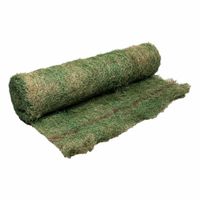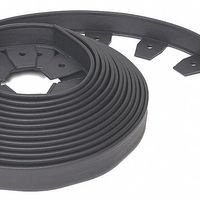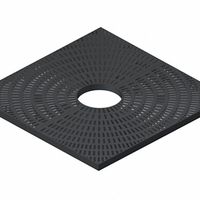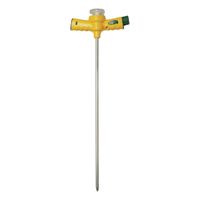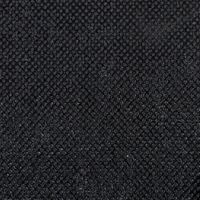Call +(254) 703 030 000 / 751 483 999 / 721 704 777
- Home
- Outdoor Equipment
- Garden Fabrics Erosion Control Blankets Tree Care
.....Read More
Frequently Asked Questions
What are the benefits of using garden fabrics for weed control?
Garden fabrics, also known as landscape fabrics or weed barriers, offer several benefits for weed control:
1. **Weed Suppression**: Garden fabrics effectively block sunlight, preventing weed seeds from germinating and growing. This reduces the need for chemical herbicides and manual weeding, saving time and effort.
2. **Soil Moisture Retention**: These fabrics help retain soil moisture by reducing evaporation. This is beneficial for plant health, as consistent moisture levels support root development and reduce the frequency of watering.
3. **Soil Temperature Regulation**: By insulating the soil, garden fabrics help maintain a stable temperature, protecting plant roots from extreme heat or cold. This can extend the growing season and improve plant resilience.
4. **Erosion Control**: Garden fabrics stabilize the soil, reducing erosion caused by wind and water. This is particularly useful on slopes or in areas prone to heavy rainfall.
5. **Nutrient Preservation**: By minimizing soil disturbance and erosion, garden fabrics help preserve soil nutrients, ensuring they remain available for plant uptake.
6. **Pest Reduction**: Some garden fabrics can deter pests by creating a physical barrier that prevents insects and small animals from reaching plant roots.
7. **Low Maintenance**: Once installed, garden fabrics require minimal maintenance. They provide long-term weed control, reducing the need for frequent interventions.
8. **Environmentally Friendly**: Using garden fabrics reduces reliance on chemical herbicides, promoting a more sustainable and eco-friendly gardening practice.
9. **Aesthetic Appeal**: Garden fabrics create a neat and tidy appearance, enhancing the visual appeal of garden beds and landscapes.
10. **Versatility**: Available in various materials and thicknesses, garden fabrics can be tailored to different gardening needs, from vegetable gardens to ornamental landscapes.
How do erosion control blankets work to prevent soil erosion?
Erosion control blankets are designed to stabilize soil and prevent erosion by providing a protective layer over the soil surface. These blankets are typically made from natural fibers like straw, coconut coir, or jute, or synthetic materials such as polypropylene. They work through several mechanisms:
1. **Surface Protection**: The blankets cover the soil, shielding it from the direct impact of raindrops, which can dislodge soil particles and initiate erosion. By absorbing and deflecting the energy of rainfall, they reduce the detachment and transport of soil particles.
2. **Moisture Retention**: Erosion control blankets help retain soil moisture by reducing evaporation. This is crucial for seed germination and the establishment of vegetation, which further stabilizes the soil.
3. **Temperature Regulation**: By providing a layer of insulation, these blankets help maintain consistent soil temperatures, promoting faster and more uniform seed germination and plant growth.
4. **Vegetation Support**: The blankets create a microenvironment conducive to plant growth by holding seeds in place and protecting them from being washed away. As plants grow, their roots bind the soil, enhancing stability and reducing erosion.
5. **Wind Erosion Reduction**: In addition to water erosion, these blankets also protect against wind erosion by anchoring the soil and preventing it from being blown away.
6. **Decomposition and Soil Enrichment**: Natural fiber blankets gradually decompose, adding organic matter to the soil, which improves soil structure and fertility, further aiding in erosion control.
7. **Slope Stabilization**: On slopes, these blankets help hold the soil in place, preventing landslides and surface runoff that can lead to erosion.
Overall, erosion control blankets are an effective, environmentally friendly solution for preventing soil erosion, promoting vegetation growth, and enhancing soil health.
What is the best way to install landscape fabric in a garden bed?
To install landscape fabric in a garden bed, follow these steps:
1. **Prepare the Area**: Clear the garden bed of weeds, rocks, and debris. Ensure the soil is level and smooth. Amend the soil with compost or fertilizer if needed, as the fabric will limit future amendments.
2. **Measure and Cut the Fabric**: Measure the garden bed to determine the amount of fabric needed. Cut the fabric to size, allowing for a few extra inches on each side to ensure full coverage.
3. **Lay the Fabric**: Unroll the fabric over the garden bed, starting from one end. Overlap multiple pieces by 6-12 inches to prevent weeds from growing through the seams. Ensure the fabric is taut and flat against the soil.
4. **Secure the Fabric**: Use landscape fabric staples or pins to secure the fabric in place. Insert the staples every 8-12 inches along the edges and seams, and every 1-2 feet in the center to prevent shifting.
5. **Cut Holes for Plants**: Use a utility knife or scissors to cut X-shaped slits in the fabric where plants will be placed. Fold back the flaps and dig holes for the plants. Plant through the holes and fold the flaps back around the base of the plants.
6. **Cover with Mulch**: Apply a 2-3 inch layer of mulch over the fabric to protect it from UV rays and improve the garden's appearance. Mulch also helps retain moisture and further suppress weeds.
7. **Maintenance**: Regularly check for any weeds that may grow through the fabric or mulch and remove them promptly. Replenish mulch as needed to maintain coverage.
By following these steps, you can effectively install landscape fabric to suppress weeds and maintain a tidy garden bed.
How often should tree watering bags be refilled?
Tree watering bags should generally be refilled once a week, but this can vary based on several factors such as the tree species, climate, soil type, and weather conditions. In hotter, drier climates, or during periods of drought, you may need to refill the bags more frequently, possibly every 3-5 days. Conversely, in cooler, wetter climates, or during rainy seasons, you might refill them less often, perhaps every 10-14 days.
The size and age of the tree also play a role. Young or newly planted trees typically require more frequent watering to establish their root systems, while mature trees may need less frequent watering. Soil type is another consideration; sandy soils drain quickly and may require more frequent watering, whereas clay soils retain moisture longer.
It's important to monitor the moisture level of the soil around the tree. You can do this by inserting a finger or a moisture meter into the soil about 6-8 inches deep. If the soil feels dry at this depth, it's time to refill the watering bag. Additionally, observe the tree for signs of water stress, such as wilting leaves or browning edges, which indicate the need for more frequent watering.
Adjust the watering schedule based on these observations and local weather forecasts. During periods of heavy rain, you may not need to refill the bags at all. Conversely, during heatwaves or dry spells, increase the frequency of refilling. Always ensure that the watering bag is properly positioned and functioning to deliver water slowly and evenly to the tree's root zone.
What are the advantages of using tree grates around trees?
Tree grates offer several advantages when used around trees in urban and landscaped environments:
1. **Protection**: Tree grates protect the root system and trunk from physical damage caused by foot traffic, bicycles, and vehicles. This helps in maintaining the health and longevity of the tree.
2. **Space Optimization**: They allow for the efficient use of space in urban areas by enabling pedestrian traffic to flow smoothly over the tree planting area without compacting the soil or damaging the roots.
3. **Aesthetic Appeal**: Tree grates come in various designs and materials, enhancing the visual appeal of streetscapes and landscapes. They can be customized to match the architectural style of the surrounding area.
4. **Soil and Moisture Management**: Grates help in maintaining soil integrity and moisture levels by preventing soil compaction and allowing water and air to reach the roots. This promotes healthy tree growth.
5. **Safety**: By covering the tree pit, grates eliminate tripping hazards for pedestrians, ensuring a safer walking environment.
6. **Debris Control**: Tree grates prevent litter and debris from accumulating in the tree pit, which can otherwise hinder tree growth and create unsightly urban spaces.
7. **Durability**: Made from robust materials like cast iron or steel, tree grates are durable and can withstand harsh weather conditions and heavy pedestrian traffic.
8. **Environmental Benefits**: By supporting healthy tree growth, grates contribute to the urban ecosystem, improving air quality, providing shade, and reducing urban heat island effects.
9. **Flexibility**: Many tree grates are designed to be adjustable or expandable, accommodating tree growth over time without the need for replacement.
10. **Accessibility**: They ensure that tree areas are accessible to all, including those with mobility challenges, by providing a level surface for walking or wheeling.
How do you properly use plant protection fabric to prevent frost damage?
To properly use plant protection fabric to prevent frost damage, follow these steps:
1. **Select the Right Fabric**: Choose a lightweight, breathable fabric like floating row covers or frost blankets. These materials allow light, air, and moisture to reach the plants while providing insulation.
2. **Timing**: Apply the fabric before frost is expected. Monitor weather forecasts to anticipate frost events and cover plants in the late afternoon or early evening when temperatures start to drop.
3. **Installation**: Drape the fabric loosely over the plants, ensuring it touches the ground on all sides to trap ground heat. Avoid letting the fabric rest directly on the plants, as this can transfer cold. Use stakes, hoops, or frames to create a tent-like structure if necessary.
4. **Securing the Fabric**: Anchor the edges of the fabric with soil, rocks, or landscape staples to prevent it from blowing away. Ensure there are no gaps where cold air can seep in.
5. **Ventilation**: If using the fabric for extended periods, allow for ventilation during the day when temperatures rise to prevent overheating and moisture buildup. Lift the fabric or open one side to let air circulate.
6. **Removal**: Remove the fabric in the morning after the frost has lifted and temperatures have warmed. This prevents overheating and allows plants to receive sunlight for photosynthesis.
7. **Storage**: After the frost season, clean and dry the fabric before storing it in a cool, dry place to prevent mold and mildew.
By following these steps, you can effectively use plant protection fabric to shield your plants from frost damage, ensuring their health and productivity.
What is the purpose of landscape edging in garden design?
Landscape edging serves several purposes in garden design. Primarily, it provides a clear boundary between different areas of the garden, such as separating flower beds from lawns or pathways. This helps in maintaining a neat and organized appearance, enhancing the overall aesthetic appeal of the garden.
Edging also plays a functional role by preventing the spread of grass and weeds into flower beds, reducing maintenance efforts. It keeps mulch, soil, and other materials contained within designated areas, ensuring that they do not spill over onto lawns or walkways, which can create a messy look.
Additionally, landscape edging can aid in water management. By creating a barrier, it helps direct water flow, preventing erosion and ensuring that plants receive adequate moisture. This is particularly beneficial in sloped gardens where water runoff can be an issue.
Edging materials, such as stone, metal, plastic, or wood, can complement the garden's design, adding texture and contrast. The choice of material can reflect the garden's style, whether it be modern, rustic, or traditional, contributing to the garden's overall theme.
Moreover, landscape edging can enhance safety by clearly defining pathways, reducing the risk of tripping or stepping on delicate plants. It can also protect plants from being accidentally damaged by lawn mowers or foot traffic.
In summary, landscape edging is a crucial element in garden design, offering aesthetic, functional, and protective benefits. It helps maintain order, reduces maintenance, manages water flow, and enhances the garden's visual appeal, making it an essential component for both amateur and professional gardeners.
How do tree wraps and protectors help in tree care?
Tree wraps and protectors are essential tools in tree care, offering multiple benefits that enhance the health and longevity of trees. They serve primarily to shield trees from various environmental and physical threats.
1. **Protection from Temperature Extremes**: Tree wraps help in insulating the bark against extreme temperatures. In winter, they prevent frost cracks by maintaining a more consistent temperature on the tree's surface, reducing the risk of damage from freezing and thawing cycles. In summer, they can protect young trees from sunscald by reflecting sunlight and preventing overheating.
2. **Pest and Animal Deterrence**: Tree protectors act as a barrier against pests such as insects and rodents. They prevent animals like deer, rabbits, and voles from gnawing on the bark, which can cause significant damage or even kill young trees.
3. **Mechanical Damage Prevention**: Tree wraps shield trees from mechanical injuries caused by lawn equipment, such as mowers and trimmers. This protection is crucial for maintaining the integrity of the bark, which is vital for the tree's nutrient transport and overall health.
4. **Moisture Retention**: By reducing water loss from the bark, tree wraps help maintain adequate moisture levels, which is particularly beneficial in arid climates or during drought conditions.
5. **Disease Prevention**: Some tree wraps are treated with fungicides or insecticides, providing an additional layer of protection against diseases and infestations that can compromise tree health.
6. **Support for Young Trees**: For newly planted or young trees, wraps and protectors offer structural support, helping them grow straight and withstand strong winds.
Overall, tree wraps and protectors are a proactive measure in tree care, promoting healthy growth and preventing damage from various environmental and physical factors.
What are the best practices for using garden stakes and plant supports?
1. **Choose the Right Material**: Use durable materials like bamboo, metal, or plastic for stakes. Ensure they are weather-resistant and suitable for the plant type.
2. **Select Appropriate Height and Thickness**: The stake should be tall enough to support the plant as it grows and thick enough to withstand wind and weight.
3. **Install Early**: Place stakes and supports when planting to avoid root damage. This helps plants grow around the support naturally.
4. **Position Correctly**: Place stakes 2-3 inches away from the plant to prevent root disturbance. For climbing plants, position supports where they can easily latch on.
5. **Secure Gently**: Use soft ties like garden twine, cloth strips, or plant clips to attach plants to stakes. Ensure ties are loose enough to allow for growth and movement.
6. **Regularly Adjust Ties**: Check and adjust ties as plants grow to prevent constriction and damage to stems.
7. **Use Multiple Stakes for Large Plants**: For larger plants, use a tripod or teepee arrangement to provide balanced support.
8. **Consider Aesthetics**: Choose stakes and supports that blend with the garden design. Decorative stakes can enhance garden appearance.
9. **Rotate and Reuse**: After the growing season, clean and store stakes for reuse. Rotate their use to prevent soil-borne diseases.
10. **Monitor and Maintain**: Regularly inspect supports for stability and adjust as necessary. Replace damaged stakes promptly to ensure continuous support.
11. **Tailor to Plant Needs**: Different plants require different supports. Use cages for tomatoes, trellises for peas, and individual stakes for tall flowers.
12. **Environmental Considerations**: Opt for eco-friendly materials and practices to minimize environmental impact.
How do root feeders benefit tree growth and health?
Root feeders benefit tree growth and health by delivering essential nutrients and water directly to the root zone, which enhances nutrient uptake efficiency. This targeted delivery system ensures that trees receive the necessary elements like nitrogen, phosphorus, and potassium, which are crucial for photosynthesis, energy transfer, and overall growth. By bypassing the soil surface, root feeders minimize nutrient loss due to runoff or evaporation, ensuring that more nutrients reach the tree roots.
Additionally, root feeders help in alleviating soil compaction around the root zone. Compacted soil can restrict root growth and limit access to oxygen and water. By injecting nutrients and water directly into the soil, root feeders can help loosen compacted areas, promoting better root expansion and access to resources.
Root feeders also aid in maintaining optimal soil pH levels. Trees require specific pH ranges to absorb nutrients effectively. By using root feeders, gardeners can apply amendments that adjust the soil pH, ensuring that the tree roots can access the nutrients they need.
Moreover, root feeders can help in managing pest and disease issues. By strengthening the tree through proper nutrition, root feeders enhance the tree's natural defense mechanisms, making it more resilient to pests and diseases. Some root feeding systems can also deliver systemic pesticides or fungicides directly to the root zone, providing targeted protection against specific threats.
Overall, root feeders contribute to healthier, more robust trees by ensuring efficient nutrient and water delivery, improving soil conditions, and enhancing the tree's natural defenses. This leads to increased growth rates, better resistance to environmental stresses, and a longer lifespan for the trees.
